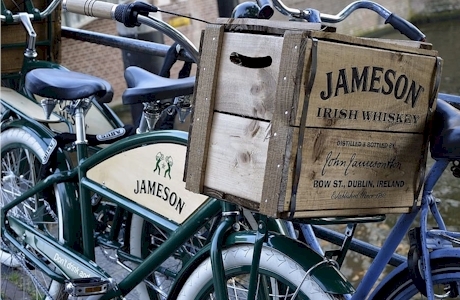IRISH WHISKEY HISTORY
By Steve Kirwan
Applying the ancient Babylonian technique of distillation, Twelfth-century Irish monks brewed “usquebaugh,” an alcoholic liquor from barley mash as a medicine, tonic, and sacramental drink. This early “spirits” (from the term “to raise one’s spirits”) was substantially higher proof and less refined than contemporary whiskeys, often flavored with aromatic herbs such as mint, thyme, and anise.
Irish whiskey predates Scotch by several hundred years (see Scotch History), but by the mid-1500s, both Ireland and Scotland produced similar whiskeys. To force purchases from tax-paying distillers, England banned personal whiskey production several times from the 1500s to the 1700s. Despite these crackdowns, illicit private whiskey production flourished.
In the mid-1800s, blended Scotch created a surge in demand that eroded interest in the heavier-styled Irish whiskey. As Scotch quality improved and exports expanded, Irish whiskey waned. Cognac and brandy shortages due to France’s “Great Wine Blight” allowed Scotch to become the world’s premier spirit, effectively destroying the Irish whiskey trade. Prior to the 1890s, Ireland boasted over 30 distilleries. A century later, only three remained.
It’s poetic that Scotch’s popularity, the very thing that nearly ended Irish whiskey ultimately sparked its resurgence. Since 1990, Irish whiskey’s growth has outpaced Scotch fourfold, with exports growing more than 15% annually. The few remaining Irish distilleries expanded and many new high-quality Irish whiskey brands emerged. As of 2019, Ireland had twenty-five operational distilleries, with another score either planned or in construction. And despite the insurgence of American, Japanese, and Indian whiskeys (to name just a few), Irish whiskey remains popular, particularly among women and younger drinkers.

